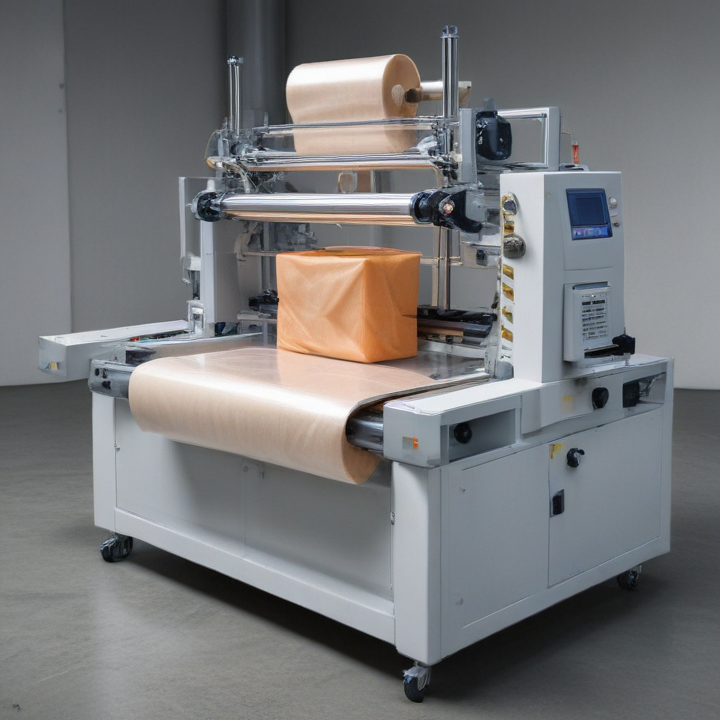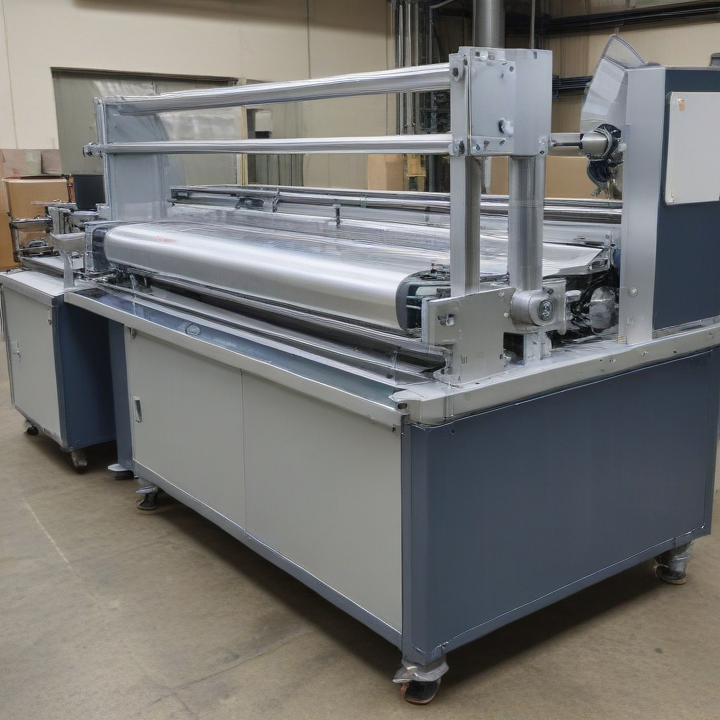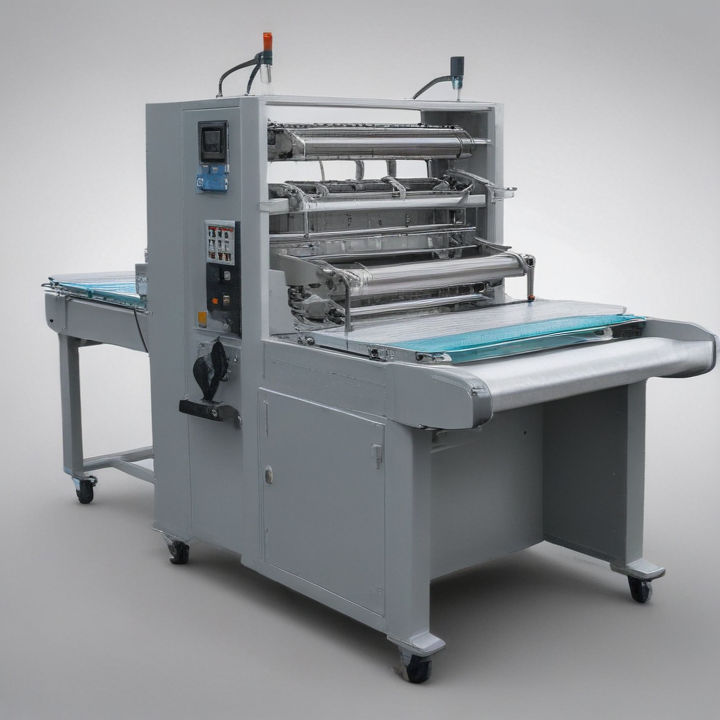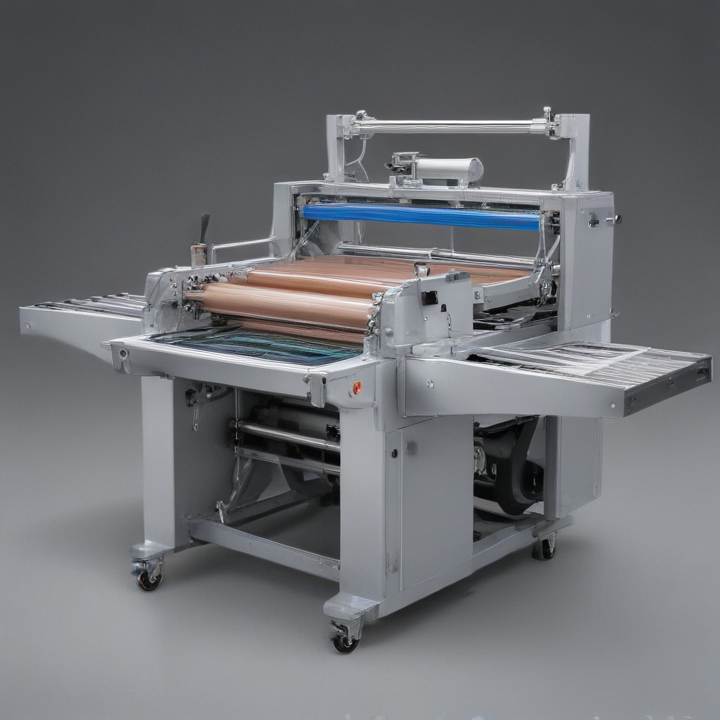List Technical Parameters of “flow wrapping machine”
Sure, here are the key technical parameters of a flow wrapping machine:
1. Film Type & Width:
– Material: Polypropylene (PP), BOPP, polyethylene (PE), or laminates.
– Width: Typically, 50 mm to 450 mm.
2. Packing Speed:
– Range: 30 to 250 packs per minute, depending on the model and product type.
3. Product Dimensions:
– Length: 50 mm to 600 mm.
– Width: 20 mm to 200 mm.
– Height: 1 mm to 100 mm.
4. Machine Dimensions:
– Footprint: Varies, typically around 3000 mm (L) x 1000 mm (W) x 1700 mm (H).
5. Power Requirements:
– Voltage: Usually 220V/380V, 50/60Hz.
– Power Consumption: Varies from 2 kW to 6 kW.
6. Control System:
– Type: PLC (Programmable Logic Controller) with touch-screen interface.
– HMI: (Human-Machine Interface) for ease of operation and parameter setting.
7. Temperature Control:
– Range: Adjustable, typically 0°C to 100°C for sealing jaws.
8. Sealing Type:
– Methods: Fin seal (longitudinal) and end-seal (transverse).
– Technology: Heat sealing, cold sealing, ultrasonic sealing.
9. Construction:
– Material: Stainless steel body and contact parts.
10. Feeding System:
– Type: Automatic or manual.
– Options: Belt conveyor, rotary, or infeed system.
11. Cutting System:
– Type: Rotary cutter, sheet cutter, or zigzag cutter.
12. Accuracy:
– Tolerances: ±1 mm in film cutting and product positioning.
13. Additional Features:
– Options: Date coding, gas flushing, print registration, no-product-no-bag function.
– Sensors: Photoelectric or proximity sensors for product detection.
14. Output:
– Type: Single or multi-lane flow.
15. Compressed Air:
– Requirements: Typically 0.6 MPa to 0.8 MPa.
These parameters help in selecting the right flow wrapping machine for specific packaging needs, ensuring efficiency and compatibility with the product to be packed.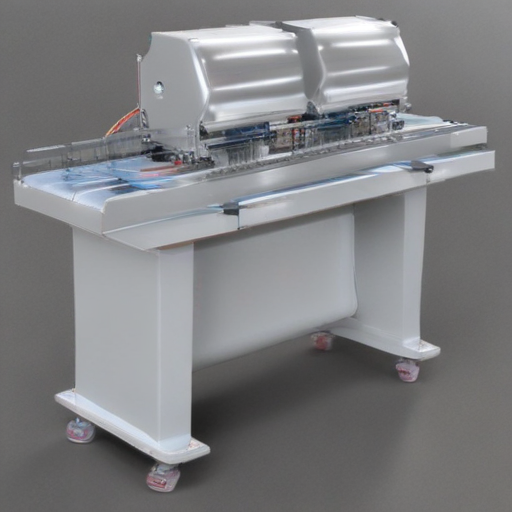
List Product features of “flow wrapping machine”
A flow wrapping machine is a high-efficiency packaging solution designed to wrap products in a continuous motion. Here are the key features:
1. Versatility: Can handle a wide range of product sizes and shapes, including food items, pharmaceuticals, and non-food products.
2. High Speed: Capable of wrapping hundreds of products per minute, enhancing productivity and reducing downtime.
3. Precision Wrapping: Equipped with advanced sensors and automatic feeding systems to ensure consistent and precise wrapping.
4. Sealing Options: Offers multiple sealing options, such as fin seals, lap seals, and heat seals, to suit different packaging materials and product requirements.
5. Material Compatibility: Compatible with various packaging materials, including plastic films, laminates, paper, and eco-friendly materials.
6. User-Friendly Interface: Features an intuitive touch-screen control panel for easy operation, adjustments, and diagnostics.
7. Compact Design: Designed to occupy minimal floor space while ensuring maximum output and efficiency.
8. Automatic Alignment & Adjustment: Sensors and control systems ensure products are properly aligned, reducing waste and ensuring uniform packaging.
9. Durability & Reliability: Built with high-quality materials to withstand continuous operation in demanding environments.
10. Product Safety: Incorporates safety mechanisms to prevent product damage and ensure operator safety, such as emergency stop buttons and guards.
11. Integration Capability: Can be integrated with other production line equipment, such as conveyors, labeling machines, and cartoners, for a streamlined packaging process.
12. Energy Efficiency: Designed to minimize energy consumption, contributing to cost savings and environmental sustainability.
13. Adaptability: Easily adjustable to accommodate different product types and packaging needs without extensive downtime.
14. Hygiene Compliance: Constructed with materials and features that meet hygiene standards for industries like food and pharmaceuticals, including easy-to-clean surfaces.
By incorporating these features, a flow wrapping machine provides an efficient, flexible, and reliable packaging solution that meets the demands of various industries.
List Application of “flow wrapping machine”
A flow wrapping machine is a type of packaging equipment used extensively across various industries to create sealed, tamper-evident packages in a continuous process. Here are some key applications:
1. Food Industry:
– Confectionery: Wrapping chocolates, candy bars, and other sweets.
– Bakery: Packaging bread, cakes, and pastries.
– Snacks: Enclosing chips, nuts, and granola bars.
– Frozen Foods: Sealing items like frozen pizzas and vegetables.
2. Pharmaceuticals:
– Medical Supplies: Packaging of gauze pads, bandages, and surgical instruments.
– Medicinal Products: Wrapping blister packs, individual sachets, and tablet strips.
3. Consumer Goods:
– Personal Care: Enclosing soap bars, toothbrushes, and small hygiene products.
– Household Items: Packaging items like sponges, dishcloths, and small cleaning tools.
4. Industrial Applications:
– Hardware: Wrapping screws, nails, and other small components.
– Electrical Goods: Packaging batteries, bulbs, and small electronic parts.
5. Retail Products:
– Stationery: Packaging pens, pencils, and notepads.
– Toys: Sealing small toys, puzzles, and educational kits.
6. Agricultural Products:
– Seeds and Fertilizers: Packing small sachets or pouches for retail distribution.
7. Healthcare and Hygiene:
– Sanitary Products: Packaging individual sanitary napkins, diapers, and wet wipes.
– Masks and PPE: Enclosing face masks and other personal protective equipment.
Flow wrapping machines offer versatility, efficiency, and high-speed operation, making them ideal for businesses that require consistent, protective, and attractive packaging solutions.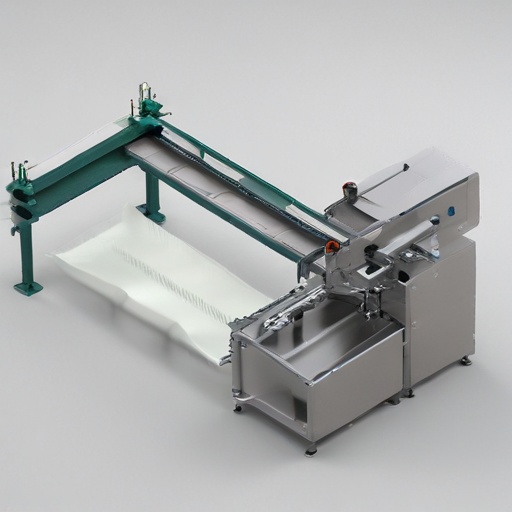
List Various Types of “flow wrapping machine”
Flow wrapping machines, also known as horizontal form-fill-seal (HFFS) machines, are used to pack a variety of products in a continuous motion using a single piece of film. Here are various types:
1. Horizontal Flow Wrappers (HFFS):
– Widely used for packaging food products like candy bars, biscuits, and bakery items.
– Example: Bosch Pack series.
2. Vertical Flow Wrappers (VFFS):
– Suitable for packing granular or free-flowing products like snacks, powders, and grains.
– Example: ILAPAK Vegatronic series.
3. Rotary Motion Flow Wrappers:
– High-speed machines ideal for large production volumes.
– Example: Omori Flow Wrapper RM series.
4. Box-Motion Flow Wrappers:
– Adaptable for products that require a more precise seal and are often used for irregular or fragile items.
– Example: PFM Hawk series.
5. Servo-Driven Flow Wrappers:
– Utilize servo motors for precise control, ensuring consistent packaging quality.
– Example: GEA SmartPacker CX400.
6. Shrink Flow Wrappers:
– Enclose products in film that shrinks tightly after heat application, often used in multi-packs.
– Example: Sealed Air Shrink Flow Wrapper.
7. Sanitary Flow Wrappers:
– Designed for vacuum-sealed or modified atmosphere packaging (MAP) for perishable goods.
– Example: Multivac R-245 Flow Wrapper.
8. Medical Flow Wrappers:
– Specifically built to adhere to strict hygiene standards required in pharmaceutical and medical fields.
– Example: Ulma TFS series.
These machines are crucial across many industries for their efficiency, precision, and ability to maintain product integrity during packaging.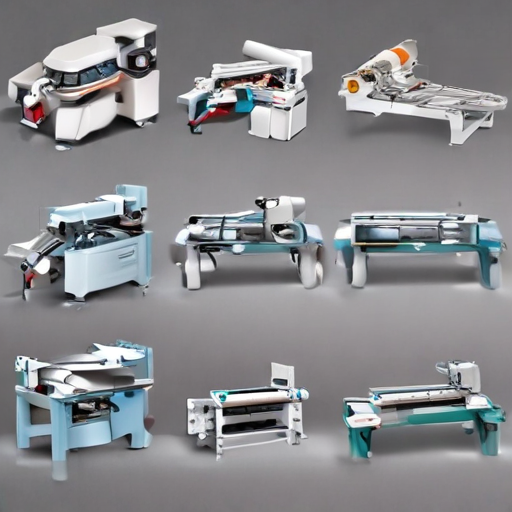
Custom Manufacturing Options for flow wrapping machine
When it comes to custom manufacturing options for flow wrapping machines, several factors can be tailored to meet specific needs. Here are a few key customizable features:
1. Film Types and Sizes:
– Machines can be modified to handle various film materials like polyethylene, polypropylene, and laminated films.
– Customizable film widths and thicknesses ensure compatibility with diverse packaging requirements.
2. Product Dimensions:
– Adjustable forming boxes and cutting mechanisms can accommodate different product sizes, from small candies to large bakery items.
3. Speed and Throughput:
– Variable-speed drives and custom configurations can tailor the machine’s output rate to match production demands.
4. Sealing Mechanisms:
– Options for different sealing methods, including thermal, cold, ultrasonic, or induction sealing, can be incorporated based on product and film type.
5. Feeding Systems:
– Customized feeding systems, such as automatic product feeders, vibratory conveyors, or robotic arms, enhance efficiency and reduce manual labor.
6. Control Systems:
– Advanced control panels with programmable logic controllers (PLCs) offer precision and flexibility in operations.
– Touchscreen interfaces for intuitive operation and easy adjustment of parameters.
7. Printing and Labeling:
– Integration of printing units for date codes, batch numbers, or branding.
– Label applicators for pre-printed or custom labels directly on the packaging.
8. Environmental Controls:
– Options for modified atmosphere packaging (MAP) to extend shelf life for perishable products.
9. Cleaning and Maintenance:
– Easy-to-clean designs with quick-release mechanisms for tool-less disassembly.
– Material choices such as stainless steel for hygiene-sensitive applications.
10. Safety Features:
– Customizable safety guards, emergency stops, and interlocks to meet specific regulatory standards.
By incorporating these custom manufacturing options, businesses can ensure their flow wrapping machines are optimized for efficiency, product safety, and cost-effectiveness.
List Quality Control and The Manufacturing Process of “flow wrapping machine”
### Quality Control of Flow Wrapping Machine
1. Component Inspection: Verify the quality of incoming parts, such as motors, sensors, and electrical components using precision measurement tools.
2. Assembly Verification: Monitor the assembly process to ensure components are correctly installed. Use checklists and assembly diagrams for consistency.
3. Functional Testing: Conduct rigorous tests to ensure the machine functions correctly. This includes cycle tests, accuracy checks, and stress testing.
4. Calibration: Ensure all sensors and operational elements like temperature controls and feeding mechanisms are precisely calibrated.
5. Safety Tests: Verify that all safety mechanisms, such as emergency stops and guards, are properly installed and functional.
6. Software Validation: Ensure embedded software or control systems are correctly programmed and free of bugs.
7. Final Inspection: Perform a comprehensive test run to verify that the machine operates according to specifications.
8. Documentation: Maintain detailed records of quality checks, calibration settings, and test results.
### Manufacturing Process of Flow Wrapping Machine
1. Design & Prototyping: Engineers design the machine using CAD software. A prototype is created to identify potential issues.
2. Part Procurement: Quality raw materials and components are sourced from certified suppliers.
3. Fabrication: Parts such as frames, panels, and guards are fabricated. CNC machines and laser cutting tools ensure high precision.
4. Sub-Assembly: Major sub-assemblies like drive systems, control panels, and feeding mechanisms are built.
5. Main Assembly: Sub-assemblies are integrated to form the main machine structure. Mechanical, electrical, and pneumatic systems are interconnected.
6. Wiring & Plumbing: Electrical wiring, control systems, and pneumatic or hydraulic lines are installed.
7. Initial Testing: Basic operational and functional tests are conducted to ensure the machine core systems work.
8. Fine-Tuning: Adjustments are made for optimal performance, including settings for speed and tension.
9. Quality Control: The machine undergoes rigorous quality control checks (detailed above).
10. Shipping Preparation: Machines are cleaned, safety-checked, and prepared for shipment. Documentation like user manuals and maintenance guides are included.
Each step in the manufacturing process involves both automated systems and skilled labor to ensure a high-quality, reliable flow wrapping machine.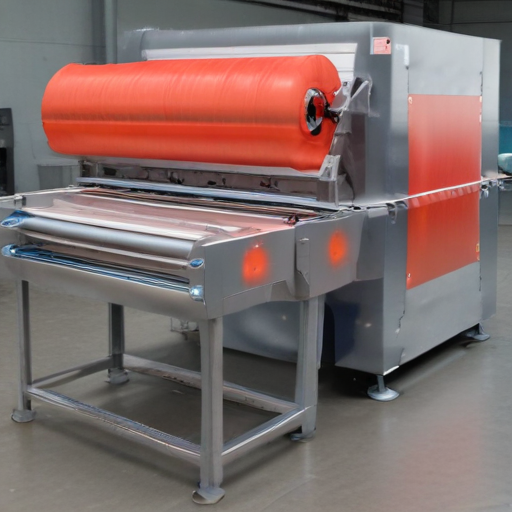
How to use “flow wrapping machine”
A flow wrapping machine is used for packaging products in a continuous motion, creating a tight, secure seal. Here’s a basic guide on how to use it:
1. Setup the Machine:
– Power On: Switch on the machine and ensure it’s properly connected to a power source.
– Load Film Roll: Attach the roll of packaging film to the unwinding station. Make sure the film is threaded correctly through the guides, tensioners, and eyemarks if the machine uses printed film.
2. Configure Settings:
– Product Dimensions: Enter the dimensions of your product into the machine’s control panel.
– Temperature: Set the sealing temperature according to the type of film being used.
– Speed: Adjust the conveyor speed based on production needs and product stability.
3. Prepare Products:
– Place products on the infeed conveyor. Ensure they are spaced evenly and oriented correctly.
4. Operating Procedure:
– Start Machine: Press the start button to begin the wrapping process.
– The film is pulled over and around the product by the machine.
– Sealing and Cutting: The machine will automatically seal the film around each product and cut it to create individual packages.
5. Monitor Operation:
– Keep an eye on the machine to ensure it runs smoothly. Watch for issues such as misfeeds, film jams, or sealing problems.
– Adjust settings as needed to maintain optimal performance.
6. Maintenance:
– Perform regular maintenance according to the manufacturer’s instructions. This includes cleaning the sealing bars, lubricating moving parts, and checking for wear and tear.
7. Shutdown:
– Turn off the machine using the proper shutdown procedure.
– Clean the machine, especially the sealing area, to prevent residue build-up.
Using a flow wrapping machine involves careful setup, ongoing monitoring, and maintenance to ensure efficient and effective packaging.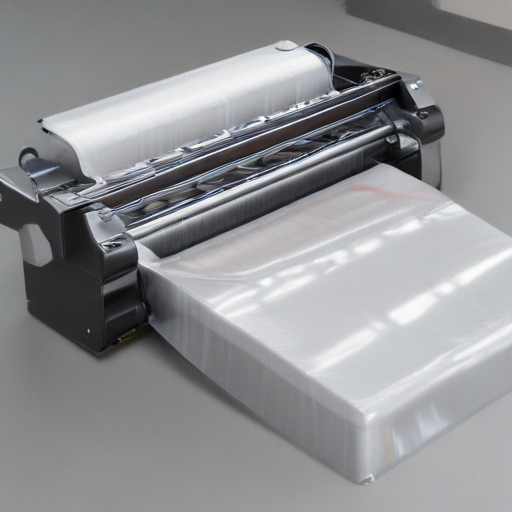
List Properties and Terms of “flow wrapping machine”
A flow wrapping machine, also known as a horizontal flow wrapper, is a packaging device that wraps products in a continuous roll of plastic film. This type of machinery is commonly used in the food, pharmaceuticals, and consumer goods industries due to its efficiency and reliability. Here are some key properties and terms associated with flow wrapping machines:
### Properties:
1. High Speed: Capable of wrapping products quickly, often in the range of 100-300 packages per minute.
2. Versatility: Suitable for packaging various products like biscuits, confectionery, bakery items, and non-food items.
3. Precision: Ensures accurate packaging with minimal waste and high-quality seals.
4. Automatic Feeding: Can be integrated with automatic feeding systems to streamline operations.
5. Adjustability: Allows for adjustments in packaging size and type, accommodating different products.
6. Sealing: Equipped with efficient sealing mechanisms like rotary or long-dwell sealing jaws to ensure airtight packaging.
7. User Interface: Often includes a touch screen or HMI for easy operation and parameter settings.
### Terms:
1. Film Roll: The continuous roll of plastic or other materials used to wrap the products.
2. In-feed Conveyor: The conveyor that delivers products to the wrapping area.
3. Product Registration: A system that ensures products are placed precisely for wrapping, often using sensors or markers.
4. Forming Box: A component that shapes the film around the product.
5. Sealing Jaws: Parts of the machine that create seals using heat or pressure to enclose the product completely.
6. Cut-off Length: The length of film used to wrap a single product, which can be adjusted according to the product size.
7. Film Tension Control: Mechanism that maintains consistent tension in the film to avoid wrinkles or tears.
8. Print Registration: Ensures that pre-printed films align correctly with the packaged product, essential for branded items.
9. Servo Motors: Used for precision control of various machine parts, enhancing accuracy and efficiency.
10. Modularity: Option to add or remove components based on specific packaging needs.
Flow wrapping machines are integral in maintaining product quality and presentation, making them essential in automated production lines.
List The Evolution history of “flow wrapping machine”
The flow wrapping machine, integral to modern packaging, has evolved significantly since its inception.
1. Early 20th Century – Basics of Packaging: Packaging machinery emerged alongside the Industrial Revolution. Initial machines focused on simple wrapping and sealing methods.
2. 1930s – First Automatic Wrappers: The overwrapping machine was developed to wrap products using cellophane. These machines were manually operated but marked the beginning of automation.
3. 1940s-1950s – Innovations in Materials and Automation: Post-WWII, advancements in plastics led to the creation of flexible packaging films, facilitating flow wrapping’s growth. Machines became more automated, with basic conveyors and sealing mechanisms.
4. 1960s – Horizontal Form-Fill-Seal (HFFS): Key development saw the introduction of horizontal form-fill-seal machinery, capable of forming a pouch from a flat reel of film, filling it with a product, and sealing it, hence “flow wrapping”.
5. 1970s – Servo Technology: The introduction of electronically controlled servomotors allowed for greater precision and versatility in flow wrapping machines. This technology improved packaging speed and accuracy.
6. 1980s-1990s – Digital Integration: Computers and programmable logic controllers (PLCs) were integrated into equipment, enhancing control and efficiency. Machines became more compact and versatile, handling diverse products.
7. 2000s – Enhanced Versatility and Speed: With the rise of consumer demand for varied packaging, flow wrapping machines adapted to handle different product sizes and shapes, as well as resealable and easy-open features.
8. 2010s – Sustainable Packaging and Industry 4.0: Environmental concerns led to innovations in eco-friendly films and reduced waste. Industry 4.0 introduced smart sensors, IoT, and data analytics, improving machine diagnostics and predictive maintenance.
9. 2020s – Advanced Automation and AI: Ongoing evolution features artificial intelligence and machine learning to optimize wrapping processes, further enhancing efficiency, and minimizing human intervention.
Flow wrapping machines continue to evolve, driven by technological advancements and changing market needs.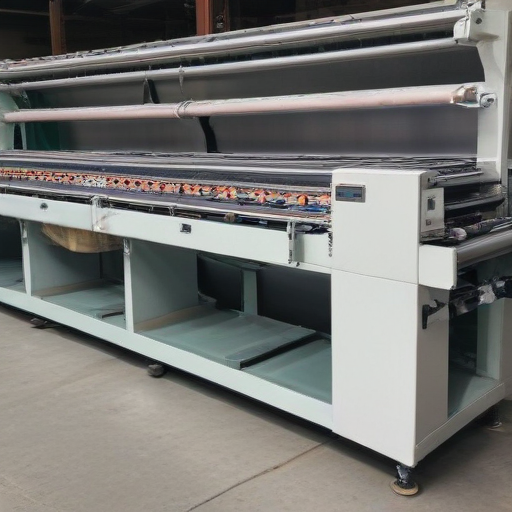
How to Select a Reliable flow wrapping machine
Selecting a reliable flow wrapping machine involves several key considerations to ensure it meets your specific needs and delivers consistent performance. Here are the steps to guide you:
1. Assess Your Requirements:
– Product Characteristics: Determine the size, shape, and type of products you plan to wrap.
– Production Speed: Estimate the required speed to match your production goals.
– Material Compatibility: Ensure the machine can work with the packaging materials you intend to use.
2. Technology and Features:
– Machine Types: Choose between horizontal or vertical flow wrapping machines based on product orientation.
– Automation Level: Decide if you need manual, semi-automatic, or fully automatic operations.
– Advanced Features: Look for features like touch screen controls, easy changeovers, and precise temperature control.
3. Quality and Reliability:
– Brand Reputation: Opt for reputable manufacturers with positive reviews and a history of reliable products.
– Build Quality: Inspect the machine’s construction and materials to ensure durability and sturdiness.
– Consistency: The machine should deliver consistent sealing and wrapping quality.
4. Ease of Maintenance and Operation:
– User-Friendly Interface: A machine with an intuitive interface will reduce training time and errors.
– Maintenance Requirements: Evaluate how easy it is to maintain and service the machine, including the availability of spare parts.
5. Technical Support and Warranty:
– Customer Service: Ensure the manufacturer provides excellent technical support.
– Warranty: A robust warranty can save costs on repairs and parts in the initial years.
6. Budget:
– Cost vs. Value: Balance initial costs with the machine’s features, durability, and potential downtime savings.
By taking the time to assess these considerations, you can select a reliable flow wrapping machine that boosts your production efficiency and meets your business needs.
List “flow wrapping machine” FAQ
Certainly! Here’s a concise FAQ for a flow wrapping machine:
Flow Wrapping Machine FAQ
1. What is a Flow Wrapping Machine?
– A flow wrapping machine, also known as a horizontal flow wrapper, is a packaging machine that wraps products in a continuous, smooth, and protective film, often used in food, pharmaceuticals, and consumer goods.
2. What Types of Products Can It Wrap?
– Flow wrapping machines can handle a wide range of products including chocolates, biscuits, bread, candy, medical devices, and small consumer goods.
3. How Does It Work?
– Products are fed into the machine’s infeed conveyor. The machine then forms a tube of film around the product, seals the film along its length (fin seal), and creates end seals to enclose the product.
4. What Materials Can Be Used for Wrapping?
– Common materials include polypropylene, cellophane, polyester laminates, and other heat-sealable films.
5. What Are the Key Features of a Flow Wrapper?
– Key features include high-speed operation, versatility in handling different sizes/shapes, adjustable settings for different products, and reliable sealing mechanisms.
6. What Benefits Does a Flow Wrapper Offer?
– Benefits include improved shelf-life, protection against contamination, attractive packaging, cost efficiency, and enhanced product presentation.
7. Is It Easy to Operate?
– Most modern flow wrappers come with user-friendly touchscreens, programmable settings, and easy-to-navigate interfaces, making them relatively simple to operate with minimal training.
8. How Do I Maintain It?
– Regular maintenance involves cleaning the machine, inspecting and replacing worn parts, ensuring proper lubrication, and performing periodic checks according to the manufacturer’s guidelines.
9. What Is the Output Capacity?
– Output capacity varies by model, with some machines capable of wrapping up to 200-300 products per minute, depending on product size and machine specifications.
10. Can It Be Integrated with Other Equipment?
– Yes, flow wrappers can be integrated with upstream and downstream equipment such as feeders, cartoners, labelers, and case packers for a fully automated packaging line.
End of FAQ
This should cover the basic questions about flow wrapping machines in a concise manner.
Top 10 FAQ with answer about flow wrapping machine for Buyer Sourcing from China
1. What is a flow wrapping machine used for?
Flow wrapping machines are used for packaging products in a transparent or printed film. They create a tight seal around the product, enhancing its appearance and extending shelf life. Common applications include food items, confectioneries, pharmaceuticals, and various consumer goods.
2. What are the types of flow wrapping machines?
The main types include horizontal flow wrappers (HFFS) for regular-shaped items and vertical flow wrappers (VFFS) for more irregular items. Additional options include machines with various sealing mechanisms, such as fin, lap, or shrink wrapping.
3. How do I choose the right machine for my product?
Consider product dimensions, production speed, packaging materials, and specific requirements like barrier properties or resealability. A machine that aligns with your production volume and operational requirements is essential.
4. What materials can flow wrapping machines handle?
These machines can handle various materials like polypropylene (PP), polyethylene (PE), cellophane, and other laminated films. The material choice depends on your product requirements, such as barrier properties and printability.
5. How is a flow wrapping machine maintained?
Regular maintenance includes cleaning the sealing jaws, checking for worn parts, and ensuring sensors and control systems are functioning correctly. Manufacturers usually provide a maintenance schedule and guidelines.
6. What factors affect the price of a flow wrapping machine?
Key factors include machine speed, customization, control system sophistication, build quality, and additional features such as automated loading and film splicing.
7. Are Chinese flow wrapping machines reliable?
Yes, many Chinese manufacturers meet international standards and provide reliable, cost-effective machines. It’s crucial to verify the manufacturer’s credentials, certifications, and customer reviews.
8. What certifications should a flow wrapping machine have?
Look for certifications like CE, ISO, and, for food-related machines, FDA and HACCP compliance. These ensure the machine meets safety and quality standards.
9. Can the machine be customized for my specific needs?
Many Chinese manufacturers offer customization options to fit specific product dimensions, packaging styles, and production requirements. It’s advisable to discuss your needs in detail before purchasing.
10. What is the lead time for delivery from China?
Standard machines typically have a lead time of 4-8 weeks. Custom machines or large orders may take longer. Confirm lead times with your supplier to align with your production schedule.

